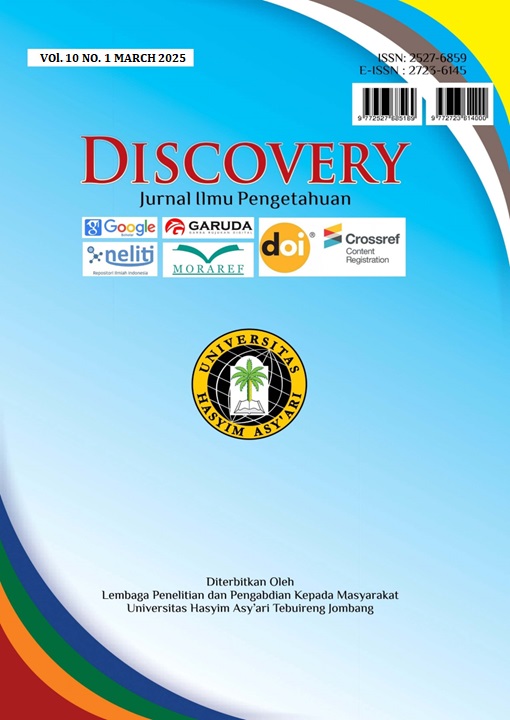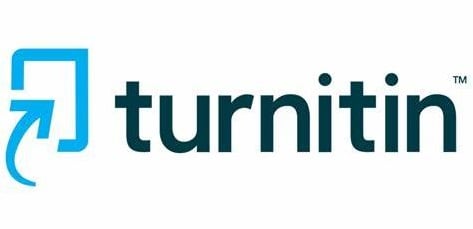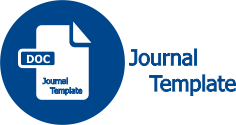Connecting Theorems and Definitions: Students' Exploration of Function Derivatives
DOI:
https://doi.org/10.33752/discovery.v10i1.8615Keywords:
Calculus learning strategies, Differentiation theorems, Function derivativesAbstract
This study aims to analyze students' understanding of derivatives of functions through independent exploration, where students were asked to create examples of functions, calculate their derivatives using differentiation theorems, and prove the results using the definition of derivatives. The subjects of the study were 35 first-semester students from the mathematics education program. Data was collected through exploratory tasks, interviews, and observations. The results showed that all students were able to determine the derivatives of the functions they created, although proving the derivative using the definition was more challenging as it involved the concept of limits previously studied. Five students demonstrated a deeper understanding by creating more complex examples, such as root and rational functions, which required manipulation techniques and the application of the quotient rule for derivatives. Interviews revealed that proving the derivative with the definition provided a deeper understanding of the fundamental concepts of derivatives. This study suggests using varied exploratory tasks and reflection sessions to enhance students' conceptual understanding of derivatives.
Downloads
References
Alam, A. (2020). Challenges and possibilities in teaching and learning of calculus: A
case study of India. Journal for the Education of Gifted Young Scientists, 8(1), 407-
Byerley, C. (2019). Calculus students’ fraction and measure schemes and
implications for teaching rate of change functions conceptually. The Journal of
Mathematical Behavior, 55, 100694.
Haghjoo, S., Reyhani, E., & Kolahdouz, F. (2020). Evaluating the understanding of
the university students (Basic Sciences and Engineering) about the numerical
representation of the average rate of change. International Journal of Educational
and Pedagogical Sciences, 14(2), 111-121.
Ikhsan, M. M., & Sa’adah, N. (2024). Pengaruh Model Pembelajaran Kooperatif Tipe
Stad Terhadap Prestasi Belajar Matematika Siswa Sma. Discovery : Jurnal Ilmu
Pengetahuan, 9(2), 85–94. https://doi.org/10.53565/pssa.v6i2.180
Ikram, M., Purwanto, P., Parta, I. N., & Susanto, H. (2020). Mathematical reasoning
required when students seek the original graph from a derivative graph. Acta
Scientiae, 22(6), 45-64.
Kirschner, P. A., Sweller, J., Kirschner, F., & Zambrano R, J. (2018). From cognitive
load theory to collaborative cognitive load theory. International journal of
computer-supported collaborative learning, 13, 213-233.
Lailiyah, N., & Zuhri, Z. (2024). The Effectiveness of the Application M3 Board
Learning Media (Mean, Median, and Mode) in Class VIII Statistics Materials at Lekok
NU Middle School. Noumerico: Journal of Technology in Mathematics
Education, 2(1), 14-22.
Lockwood, E., Ellis, A. B., & Lynch, A. G. (2016). Mathematicians’ example-related
activity when exploring and proving conjectures. International Journal of Research
in Undergraduate Mathematics Education, 2, 165-196.
Loibl, K., Roll, I., & Rummel, N. (2017). Towards a theory of when and how problem
solving followed by instruction supports learning. Educational psychology
review, 29, 693-715
Lomibao, L. S., Luna, C. A., & Namoco, R. A. (2016). The influence of mathematical
communication on students’ mathematics performance and anxiety. American
Journal of Educational Research, 4(5), 378-382
Miswaro, S. M., & Zuhri, Z. (2023). ANALISIS KESULITAN SISWA DALAM
MENYELESAIKAN SOAL CERITA MATEMATIKA PADA MATERI STATISTIKA
DITINJAU DARI KEMAMPUAN MATEMATIKA SISWA. Center of Education Journal
(CEJou), 4(2).
Mkhatshwa, T. P. (2020). Calculus students’ quantitative reasoning in the context
of solving related rates of change problems. Mathematical Thinking and
Learning, 22(2), 139-161
Nathan, M. J., & Walkington, C. (2017). Grounded and embodied mathematical
cognition: Promoting mathematical insight and proof using action and
language. Cognitive research: principles and implications, 2, 1-20
Nathan, M. J., & Walkington, C. (2017). Grounded and embodied mathematical
cognition: Promoting mathematical insight and proof using action and
language. Cognitive research: principles and implications, 2, 1-20
Rosé, C. P., McLaughlin, E. A., Liu, R., & Koedinger, K. R. (2019). Explanatory learner
models: Why machine learning (alone) is not the answer. British Journal of
Educational Technology, 50(6), 2943-2958
Santos-Trigo, M., Camacho-Machín, M., & Barrera-Mora, F. (2024). Focusing on
foundational Calculus ideas to understand the derivative concept via problemsolving tasks that involve the use of a dynamic geometry system. ZDM–Mathematics
Education, 1-15
Sriwijayati, A. M., Febriyanti, R., & Albab, M. U. (2024). Pengaruh Model
Pembelajaran Berbasis Masalah Berbantuan Geogebra Terhadap Kemampuan
Berpikir Kritis Siswa Smp. Discovery : Jurnal Ilmu Pengetahuan, 9(2), 122–130.
https://doi.org/10.36928/jsm.v6i2.2813
Stylianides, A. J., Bieda, K. N., & Morselli, F. (2016). Proof and argumentation in
mathematics education research. In The second handbook of research on the
psychology of mathematics education (pp. 315-351). Brill
Taniguchi, T., Ugur, E., Hoffmann, M., Jamone, L., Nagai, T., Rosman, B., ... &
Wörgötter, F. (2018). Symbol emergence in cognitive developmental systems: a
survey. IEEE transactions on Cognitive and Developmental Systems, 11(4), 494-516
Tarasov, V. E. (2019). On history of mathematical economics: Application of
fractional calculus. Mathematics, 7(6), 509
Tharp, D. S. (2018). Variations among White First-Year College Students’
Understanding of Privilege (Doctoral dissertation, University of Illinois at Chicago).
Watford Jr, J. M. (2024). A Commognitive Analysis of Two Discursive Learning
Environments: Exploring Students’ Discourse Regarding the Derivative
Concept (Doctoral dissertation, The Florida State University)
Zahro, S. F., & Zuhri, Z. (2024). Analisis Kemampuan Berpikir Kritis Siswa dalam
Menyelesaikan Masalah Materi Program Linear Ditinjau dari Gaya Kognitif FieldDependent dan Field-Independent. Discovery : Jurnal Ilmu Pengetahuan,
(October), 111–121.
Zuhri, Z. (2024). EKSPLORASI TURUNAN FUNGSI: DUKUNGAN AI DALAM
MENJEMBATANI TEOREMA DAN DEFINISI. Center of Education Journal
(CEJou), 5(02).
Gunarti, M. R., Harini, N. V., Zuhri, Z., & Dharmawan, P. B. (2022, December).
Interpreting kinematics graph: What do students’ show?. In AIP Conference
Proceedings (Vol. 2468, No. 1). AIP Publishing.
Downloads
Published
How to Cite
Issue
Section
License
Copyright (c) 2025 Zainullah Zuhri

This work is licensed under a Creative Commons Attribution-ShareAlike 4.0 International License.

















